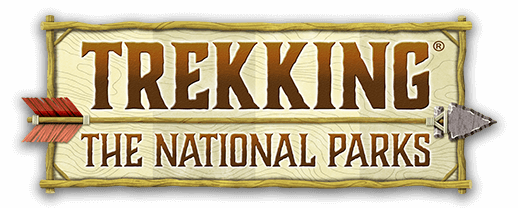Badlands National Park
Located: South Dakota - Established: November 10, 1978
The Park: Fantastic Fossil Fields! Imagine being a 7-year old girl wandering around the rich fossil beds found in the Badlands and discovering the fossilized remains of a well-preserved Saber Tooth Cat!
That’s exactly what happened in 2010 when 7-year old Kylie discovered this treasured artifact. This park contains the world’s largest assemblage of fossilized mammals including the likes of rhinos and wild horses.
Besides the intrigue of the fossil exhibits, the Badlands is comprised of extremely rugged and unique geological landforms that will have you gasping in disbelief. The jagged peaks of The Wall and rounded hillocks near Dillon Pass explode with a wide range of banded colors. It’s a wonder how early pioneers were able to traverse such rugged and harsh terrain.
The park is divided into two units – North and South. Most visitors enter the park via the North Unit. The South Unit is mostly undeveloped yet awaits those with a “pioneering spirit!”
North Unit Badlands
Prairielands: In between the rugged terrain, Badlands protects one of the largest expanses of mixed grass prairie in the US. These prairielands are home to a wide variety of animals including bison, bighorn sheep, badgers and bobcats, prairie dogs and the reintroduced black-footed ferret.
Getting there: Badlands is located 75 miles east of Rapid City, SD and 3 miles south of Interstate 90.
When to visit: Badlands is open year round. Summer temperatures often top 100°. Winters can be unforgivingly cold. Spring and fall offer the best time of year to visit.
What to do: If you do only one thing when visiting the Badlands, take the 31-mile Badlands Loop Drive, which is found in the North Unit. Along this route, you will view colorful pinnacles, jagged mountains and bizarre-looking mounds resembling the likeness of large scoops of Neapolitan ice cream.
Enjoy the summertime Night Sky Events that feature a dazzling display of sparkling gems filling the sky.
Hikes: Be sure to take advantage of the easy hiking terrain. The longest hike in the North Unit is the 10-mile round trip Castle Trail, which starts at the Door and Window Trail parking area and travels five miles one way to the Fossil Exhibit Trail. This is a relatively level trail that passes along some badlands formations.
Notch Trail
Where to stay: Cedar Pass Lodge, located within the park’s north unit, offers “eco-friendly” cabins. The Badlands Inn is located just outside the park and features 20 rooms with unobstructed views of the Badlands.
Cedar Pass Campground is adjacent to the Lodge with 96 level sites facilitating both tent and RV campers. The primitive Sage Creek Campground at the western reaches of the north Unit is accessed via a dirt road and is available on a first-come, first served basis free of charge.
Terry trekking the Badlands...park visit #35.
Memorable moment: Hiking the Notch Trail, a 1.5-mile round trip moderately rated trek, features climbing up a 59-step log ladder (see picture) that leads to the trail to "the Notch" which provides a dramatic view of the incredibly rugged White River Valley.
Trivia: The congressional bill originally proposing this park used the name - Teton National Park - in the hopes of avoiding the negative-sounding name of Badlands.
Banner: Jagged spires of the Badlands mountains.
Experience these Check List:
- Stop by the White River or Ben Reifel Visitor Centers
- Take the Badlands Loop Scenic Drive
- Hike the Notch Trail
- Visit the Saber Site and Fossil Lab
- View the “Sea of Grass”
- Take a side trip to the Minuteman Missle Silo




